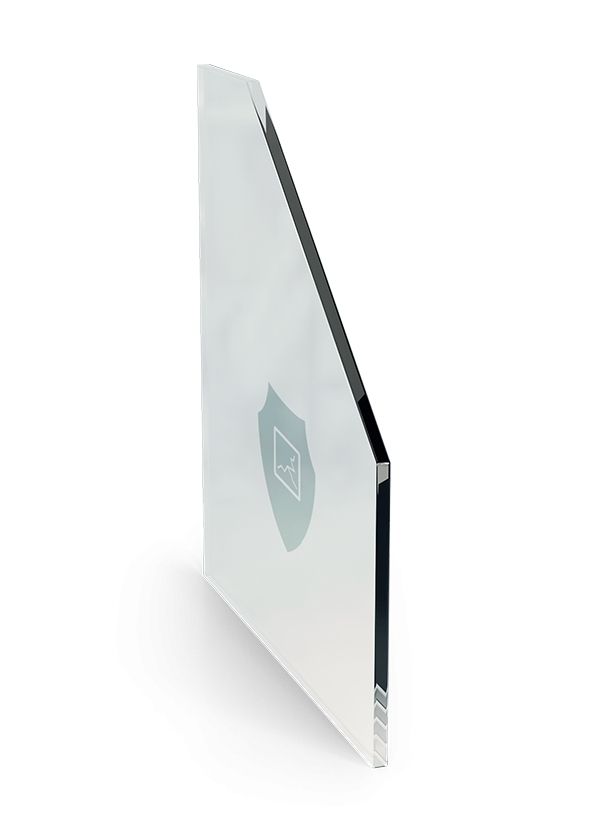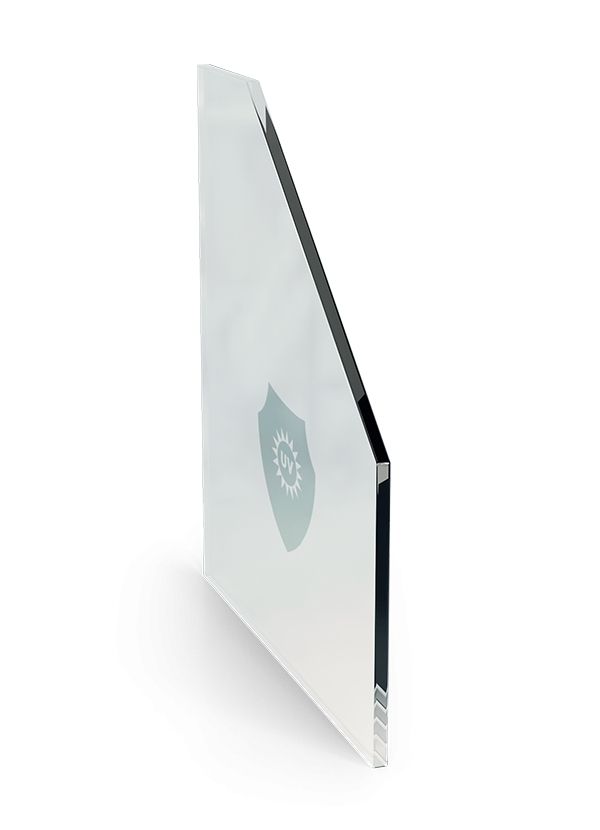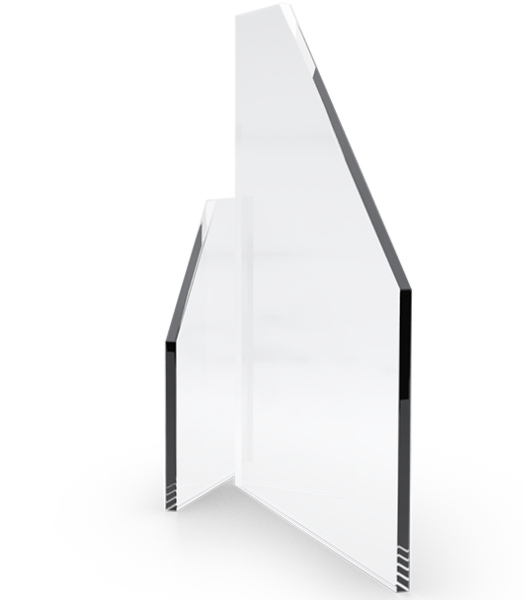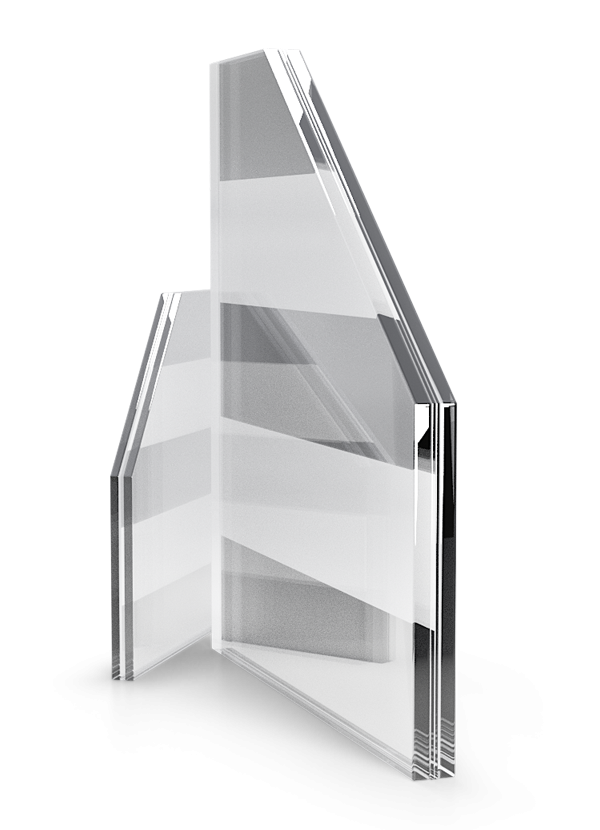When it comes to choosing windows, most people focus on the window design, the frame material and the overall window aesthetics. However, the most important question to answer in such a process is what types of glass panes you want for your windows. Because let’s face it: without panes, there would be no windows, and as a result, there would be no safe apartments and houses. That’s why the choice of proper window pane glass types should never be pushed into the background. In this article we’ll take a look at what today’s windows can do and what window pane glass types they are equipped with. All of this is in order to help you choose the window pane glass types that will actually suit our needs.
Performance parameters for assessing window pane glass
When choosing windows, in addition to the price, frame material or number of chambers, it is worth paying attention to the parameters of the glass that affect the use of the window. Here are the most important ones:
Ug coefficient [W/(m2·K)]
It shows heat gains and losses through glazing, which are caused by the difference between external and internal air temperature. The lower the value of this coefficient, the better the thermal insulation properties of the glazing unit. However, remember that the Ug coefficient applies only to the glass and is only a component to calculate the heat transfer coefficient of the entire window, namely Uw.
Lt coefficient [%]
It is a light transmittance coefficient, showing what part of the visible light falling at an angle of approximately 90 degrees is transmitted through the glass. The higher the value of the coefficient, the more light penetrates through the glass into the room, which, in turn, reduces the costs of using artificial lighting.
The G Factor
Also called a Solar Factor or Total Solar Energy Transmittance. It shows what part of the solar radiation falling at an angle of approximately 90 degrees is transmitted through the glazing into the room. If an SF value is too high, it causes the room to overheat, but if it’s too low, it will not let in natural sunlight in winter. In houses, the G Factor should be approximately 60%, thanks to which we can use the power of the sun as a free source of heat in winter and autumn.
Different types of triple and double pane windows
Now when we have already become familiar with the window parameters, it’s time to move on to some technical records related to different types of window panes. Frankly, they generally say little to a person not associated with the window industry on a daily basis. But when you are looking for the best types of glass panes for your home, you should get familiar with this terminology. Window glass panes usually take up about 70% of the window surface, and even more in the case of e.g. large patio windows. That’s why it is crucial (and beneficial!) to learn more about increasingly warmer glazing units used by window manufacturers worldwide. The window pane is also the warmest part of the window (it has the biggest impact on the improvement of the U-value in the window).
Types of glazing units can be divided according to the number of chambers and their functions. A glazing unit is a structure consisting of at least two window panes that form an inter-pane chamber containing non-toxic gases (such as argon and krypton), separated from each other and sealed around the entire circumference by a warm edge spacer, sealants and vapour-absorbing substances. A single-chamber insulated glazing unit consists of two panes of glass. One of them is covered with a low-emission coating. The standard construction of a single-chamber glazing unit is e.g. 4/16/4 (24 mm of thickness in total). Double-chamber insulated glazing units can be successfully used in energy-saving constructions. The third window glass pane in a double-chamber glazing unit increases its thermal parameters and, consequently, improves thermal comfort in the building. The standard construction of a double-chamber glazing unit is e.g. 4/12/4/12/4 (36 mm of thickness in total). Nowadays, in passive constructions, three-chamber insulated glazing units are used more and more often. As standard, they have aluminium warm edge spacer bars, i.e. the elements of the insulated glazing unit that separate glass window panes. Thanks to them, the window gains better thermal insulation, which in turn makes you feel cosy warmth in winter and refreshing coolness in summer. For more information on the uses and benefits of triple and double pane windows, go to THIS blog article.
Types of glass window panes
When choosing the best types of window panes for our windows, it is worth remembering that the latter do fulfil many different functions. They are responsible not only for the proper illumination of our house interiors but also for their acoustic comfort, warmth and overall safety. There are many types of window glass panes available on the market today. They can be selected according to the rooms they are to be used in and the primary functions they are to perform.
-
Sound-absorbing panes
Each window is soundproof to some extent. However, if soundproofing is your priority, it is worth paying attention to sound-absorbing panes. Sometimes triple-glazed units absorb such an amount of noise, that any specific soundproof glazing unit won’t be needed. The total thickness of the glazing unit also has an impact on the improvement, e.g 48 mm package will be better than 36 mm although both of them have three panes. But when you are living next to a busy road, it is better to choose the specific solution which solves the issue with the noise. Thanks to the presence of acoustic foil in sound-absorbing panes, the sound from outside is effectively muted, ensuring comfort for people inside the building. Sound-absorbing panes are thicker and heavier than standard glass. Such panes are made of ordinary, toughened or laminated glass (minimum two glass panes connected with PVB foil). In practically every window, one pane should be at least 50% thicker than the other – in such a way, that sounds of different frequencies will be effectively suppressed. If you want to be sure that chosen glazing units are soundproof, pay attention to the amount of dB (decibels). The higher the value, the better the acoustic insulation. Soundproof glazing units start at 45 dB and higher. Sound-proof glazing might be even two times more expensive than the standard one (with the same thickness and number of panes).
-
Safety panes
If safety is a key factor in choosing windows, it is worth considering safe or anti-burglary glass panes. Safety window panes consist of at least two glass panes and a PVB foil. This unique structure makes such glass panes more resistant against breakage. However, if they do break, they will not break into pieces, which significantly reduces the likelihood of injury. Safety panes are toughened, laminated, glued with resin or reinforced with a wire mesh (that’s why the glass pane remains in one piece when broken). Pay attention to the marking of safety glass panes: the symbols O1, O2 mean that they only protect against injury, while P1 and P2 indicate that they are more durable and more difficult to break during a break-in. As the name itself suggests, anti-burglary panes protect against burglary and reduce the risk of home break-ins. They consist of glass panes glued in layers, which are interleaved with a special foil, resistant to tearing. Window pane glass types with resistance class P2 (2 panes of glass and 2 layers of foil) and P4 (2 panes of glass and 4 layers of foil) will prove the most beneficial here. In addition to increasing safety, laminated glass also muffles unwanted sounds and noise. Such a function is performed by the PVB silence foil, which, like the standard PVB foil, is placed between the glass panes. Safety glazing might be even three times more expensive than the standard one (with the same thickness and number of panes).
-
Toughened panes
Toughened (or tempered) panes are the type of safety panes. The toughening process significantly changes the internal structure of glass panes, which translates into their increased strength. Toughened (or tempered) glass is classified as a safety glass or “ESG” group. The toughening process (heating the glass up to 600° C and rapidly cooling it) does not affect the visual aspects of glass panes. There are only minimal distortions possible. What really changes are the physical properties. Heat-treated glass window panes are 5 to 7 times more resistant to shattering than the standard ones of the same thickness.Important feature of toughened glass panes is their flexibility and resilience to mechanical and thermal factors, including rapid temperature changes. That’s why they are generally installed in floor-length windows in homes or offices, kitchens, bathrooms or minimalist sliding door systems designed for a large glazing surface of about 90%. They will also prove well in the areas with harsh weather conditions where window panes have to withstand rain, hail, wind, snow, sleet, or ice on an everyday basis. Obviously, toughened window pane glass types can also be damaged. However, in such cases, the glass pane breaks into many small elements with unsharp edges, which minimises the risk of injury.
-
Fireproof panes
In many cases, window panes must meet the requirements of fire safety regulations – especially those regarding fire spread prevention and safe evacuation of building users. Meeting these requirements often involves the use of fire-resistant glass. It is made of toughened glass panes with a colourless hydrogel between them. The latter expands in volume under the influence of high temperatures. Fireproof window panes are available in fire resistance class EI30 (20 mm thick) or EI60 (25 mm thick). The types of glass panes within EI30 class avoid the passage of flames, fumes, toxic gases, radiant heat, and temperature completely for a period of 30 minutes, while panes that are within EI60 class, consequently, remain fire-resistant for a period of 60 minutes.
-
Solar control panes (antisol)
Solar control glass panes are a good solution for houses, apartments and offices. In their case, foil or tinted glass placed on the outside reduces the flow of sunlight into the building’s interior by up to 30% (without limiting light transmittance). As they absorb the energy of solar radiation, their main task is to protect rooms against excessive heating. But such types of glass panes do not only reflect and absorb heat – they also filter light to reduce glare. Thanks to this, objects seen through the glass and in its reflection retain a neutral appearance. Solar control window panes are offered with selective, absorbing or reflective types of glass panes.
-
Decorative panes
These types of glass window panes are probably the most eye-catching ones. Simply because these are the panes of various designs and colours. Decorative glass window panes will be ideal for house windows, front door glass panels and partition walls. Depending on the type or pattern chosen, they do not only increase privacy, but also brighten the interior, making it optically more spacious. The so-called frosted glass is ideal for use in e.g. bathrooms. It completely prevents anyone from the outside from seeing what is happening in the room. In addition to standard frosted, acid-etched glass, there are also different types of coloured window glass panes, as well as ornamental glass available in many patterns.
-
Self-cleaning panes
Such window pane glass types are a good choice for those who do not like cleaning windows. The glass surface is covered with a special coating, on which organic dirt is decomposed by the UV radiation. Then, thanks to the hydrophilic properties of the coating covering the glass, rainwater removes dirt, flowing down the entire pane without creating stains. It is worth considering using these panes for large glazing surfaces, where window cleaning may be difficult, for example in large aluminium sliding systems.Beware that the term ‘self-cleaning’may be a bit misleading here – these types of window panes also have to be cleaned, just less often than the ordinary ones.
-
Smart panes with regulated transparency
Nowadays, modern technological solutions are becoming more and more widely used in the window industry. Smart panes made of the so-called Digi Glass allow you to adjust the degree of transparency to your needs and preferences. This is a perfect solution for homes, offices and other public buildings as they guarantee privacy and confidentiality. With a Digi Glass solution, you can go from full transparency to perfect coverage in less than 1 second. Digi Glass can be divided into up to 5 panels and can be changed from fully clear glass to frosted glass in the blink of an eye. The panels are operated using a convenient remote control or mobile application. The solution is energy-saving and completely safe: 1 m2 of Digi Glass requires only 1 W of energy and is powered by low voltage of 48 V.
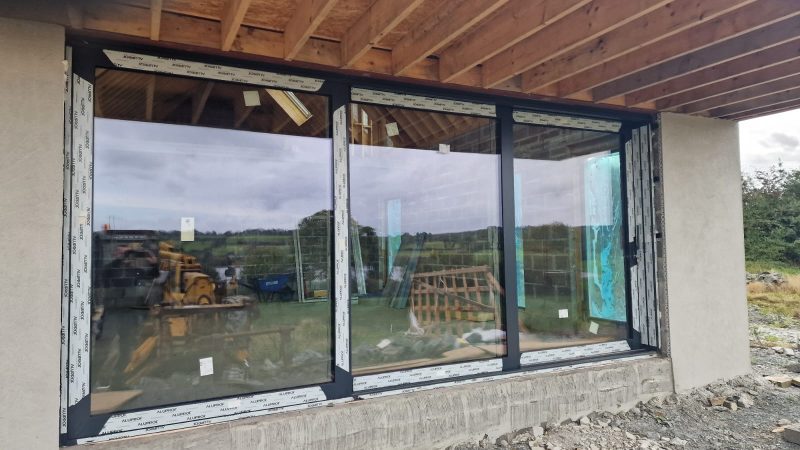
How to select the best types of glass panes
All types of window panes serve different purposes to give your windows the look, feel or energy efficiency you want. In addition to providing sufficient daylight, they have to protect against heat escape, noise and burglary. Are you wondering what types of glass panes to choose for your dream windows? Contact us and ask for support! Our Joinery Specialistswill answer all your questions and help you make the right choice. You can also look for the most suitable types of window panes on our website HERE.


